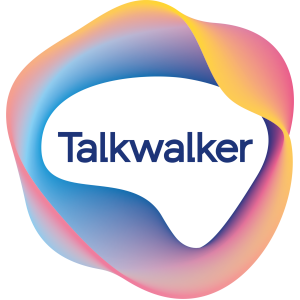Public relations can often be hard to define or confine to a single box or label. From a broad perspective, PR experts curate narratives to advance the messages of clients and build reputations across a variety of channels.
We find and translate positive messages into stories and value-added content to help businesses reach their audience and become a trusted and authoritative voice in a specific industry, from property and healthcare to education and ESG.
In order to understand how this is achieved, it might be useful to delve a little deeper into the specific PR activities that can help to boost a business’s reputation and place spokespeople as effective thought-leaders in their industry. This blog will also explore the valuable web-based tools and software that agencies can use to help.

1. Media Relations: Press releases and opinion pieces
Media relations is all about the relationship between your business, its messaging and the media. How are you portrayed by the media? What are they saying about you? Or are they saying nothing at all?
PR-ists are experts in building relationships with journalists to manage how a company’s reputation and messaging are portrayed in all aspects of the media. The purpose of this to get a business’s brand and spokespeople into the media promoting a positive message that will drive change in the industry and present them as a trusted expert (we also offer one-on-one media training to executives). In turn, this will drive the targeted audience to your website, content and products, as well as ensuring your business becomes a household name.
One essential tool in media relations is a press release: a document designed to inform the media and the public about significant company announcements, such as new hires or impressive deals. By distributing press releases to key media titles, PR people can start conversations and raise awareness of their clients’ announcements, driving traffic and generating valuable publicity.
Another such tool in businesses’ media relations arsenal is an opinion piece (or op-ed), which is a longer and more in-depth article authored by a key spokesperson in the business. PR agencies will secure these opportunities through media networks and will then aid in drafting the content and messaging to ensure it aligns with the brand and image the company wants to portray.
PR professionals rely on a range of tools to ensure that their clients’ press releases and op-eds are as effective as possible. Two popular media relations platforms used by PR pros are Agility PR Solutions and Roxhill Media. These tools allow users to build a journalist network and distribute press releases with ease. Moreover, they provide insight into which media targets are engaging most with the content, allowing PR specialists to conduct more targeted outreach and follow-ups. By leveraging these tools they can ensure that their clients’ content reaches the right audience and generates the desired impact, ultimately driving better results.
Another critical aspect of effective PR is ensuring that all written content is free from errors and mistakes. To this end, proofreading and spellchecking tools such as LanguageTool, Grammarly, and AI-language models like ChatGPT come very handy to ensure that the content is grammatically correct and error-free. Such tools can be particularly useful when drafting opinion pieces or other longer-form content as they can help ensure that the messaging aligns with the clients’ brand and image and also that the content is polished and professional.
2. Media monitoring & alerts
Media monitoring and alert tools are invaluable resources for PR professionals looking to keep track of what is being said about their clients in the media. With several tools available in the market, PR professionals have access to a range of solutions to help them stay on top of brand mentions and sentiment across various channels.
Examples of effective media monitoring tools include:

- Comprehensive media monitoring and analytics tool that provides real-time insights into brand mentions and sentiment across social media, blogs, forums, and news sites.
- With customizable dashboards, automated reports, and sentiment analysis features, Talkwalker helps PR professionals looking to monitor their clients’ online presence effectively.

- A free tool that helps PR professionals to track mentions of specific keywords or phrases across the web.
- Enables users can set up alerts for their clients’ brand names, competitors, and relevant industry topics and receive notifications via email or RSS feed.

- A free media monitoring tool that provides real-time email alerts whenever a keyword or phrase of interest appears on Reddit or Hacker News.
- Can be useful for PR professionals looking to track online conversations related to their clients’ products or services.
- A social media listening tool that enables PR professionals to monitor brand mentions, track sentiment and analyse social media brand mentions across a range of platforms.
- The tool features a customisable dashboard, automated reports and sentiment analysis
When it comes to presenting media coverage to clients, CoverageBook is a highly effective tool. This platform takes the URLs of online media coverage and collates them into a book that can be easily downloaded as a PDF and shared with clients for their records. CoverageBook also provides useful metrics, such as the number of views a piece has had or the potential audience reach, making it a valuable resource for presenting media coverage to clients in a way that is easy to understand and interpret.
By leveraging the power of media monitoring and alert tools, PR professionals can stay on top of brand mentions and effectively present media coverage to their clients.
3. Social Media
Social media channels are the perfect platforms for businesses to interact and engage with their audience on. Social media allows this to happen on a day-by-day, minute-by-minute basis, therefore, ensure that you’re utilising it.
PR agencies can help businesses keep audiences up to date by sharing relevant industry news and generating conversations about important topics in that space. It’s a great space to shout out about company achievements and announcements. From a PR perspective, social media can also be used to share coverage in the media and drive traffic to that content. For example, a comment in the Financial Times or Forbes.
Sharing photos, videos and client stories across social channels is a powerful way to reach and connect with new and existing customers. PR and digital marketing professionals are on hand to aid in drafting content and ensuring the messaging aligns with the company’s wider objectives and voice. To increase engagement on social media, it is essential to ensure that content shared is visually appealing and engaging. Several free tools exist to help businesses create eye-catching designs and infographics, such as:
Gimp – An image editor that can be used for photo retouching, image composition or image authoring.
Canva – A free-to-use online graphic design tool that can be used to create social media posts, presentations, posters, videos and more.
Inkscape – A free and open source graphics editing programme that can be used to create or edit graphics such as illustrations, diagrams, logos or complex paintings.
Another way to engage with an audience on social media is through interactive content like surveys –free tools such as SurveyMonkey and Typeform can help businesses gather valuable insights and feedback from their audience, ultimately leading to better content creation and a stronger understanding of their audience’s needs and preferences.
4. Events and awards
Industry events and awards are powerful PR tools that businesses can leverage to enhance their reputation and drive awareness of their brand within a specific industry. Attending industry events and conferences provides businesses with access to a network of industry leaders, which can generate new leads and help them stay up to date with the latest industry trends and insights.
PR specialists are always on the lookout for relevant awards that businesses can enter, attend or sponsor, as well as events and panel discussions that their key spokespeople can participate in. These events are carefully selected to align with the company’s objectives and help increase the visibility of the business in its field.
Participating in panel discussions or speaking at events provides businesses with an opportunity to demonstrate their knowledge and showcase their expertise, promoting their brand and engaging with potential clients. Winning or being shortlisted for a prestigious award can give businesses valuable credibility and act as a third-party endorsement. This recognition can help set a business apart from its competitors and demonstrate that the company is a proven industry leader.
Awards can also provide an opportunity for businesses to celebrate their achievements, boost team morale, and create positive buzz around their brand. Overall, the aim of participating in events and awards is to increase the visibility of a business in its field and establish it as a company with expertise.
5. Letters and Feedback
As well as keeping up to date with the latest news, you should constantly be on the lookout for ways to help your business to actively participate in the news agenda conversation.
A powerful way to do this is to offer comments, letters and feedback articles off the back of industry news as soon as it comes out. Morning monitoring of news allows PR professionals to help a business become the first one to comment on something or offer a spokesperson to the particular journalist in question.
For example, if you own a property business and there is a significant event or news announcement within this space, PR professionals can use their media relationship to ensure the client’s spokespeople are put forward for comments and feedback.
ResponseSource is a helpful tool to help PR professionals look for opportunities for expert commentary. Journalists send daily requests through this platform looking for spokespeople and comments on certain topics and themes or they might be looking to interview someone from a particular industry background.
This can help PR professionals to connect clients with target journalists and generate meaningful and organic media coverage.
6. Newsletters
Digital newsletters are a great way to strengthen connections with customers and provide an opportunity to communicate company updates, significant news and show off a businesses’ imagery and personality.
PR professionals can aid in drafting regular newsletters for clients to ensure that their customers do not forget who they are and what they are up to. A useful tool that can be used to create and distribute newsletters is Hubspot.
HubSpot is once again particularly useful in helping businesses to understand exactly who is opening and reading the content that is being distributed. It’s also a great way of reaching out to new audiences and spreading a businesses’ name far and wide.
PR is a multifaceted field that defies a singular definition or label. As this blog post demonstrates, it encompasses a wide range of activities and brand-building methods that are inherently connected to the media. However, for businesses looking to boost their brand credibility and change the way their target audience thinks about their company and spokespeople, PR is an essential tool, serving as a catalyst for generating conversation and sparking interest in brands and businesses in the public eye.
By incorporating these tools and activities into a PR strategy, businesses can build their brand, enhance their reputation, and reach their target audience effectively. Leveraging the power of media relations, social media, events and other PR tactics can help businesses create a positive image and establish themselves as leaders in their industries.
To make the most of these PR tools, it is essential to have a clear strategy and a well-defined message that resonates with your target audience. Working with an experienced PR agency can help businesses to develop a comprehensive PR plan and execute it effectively. By combining the right tactics and tools with a strategic approach, businesses can achieve their PR goals and take their brand to the next level.
For more information on how you can further your business’s reach with press releases and opinion pieces, contact us.
